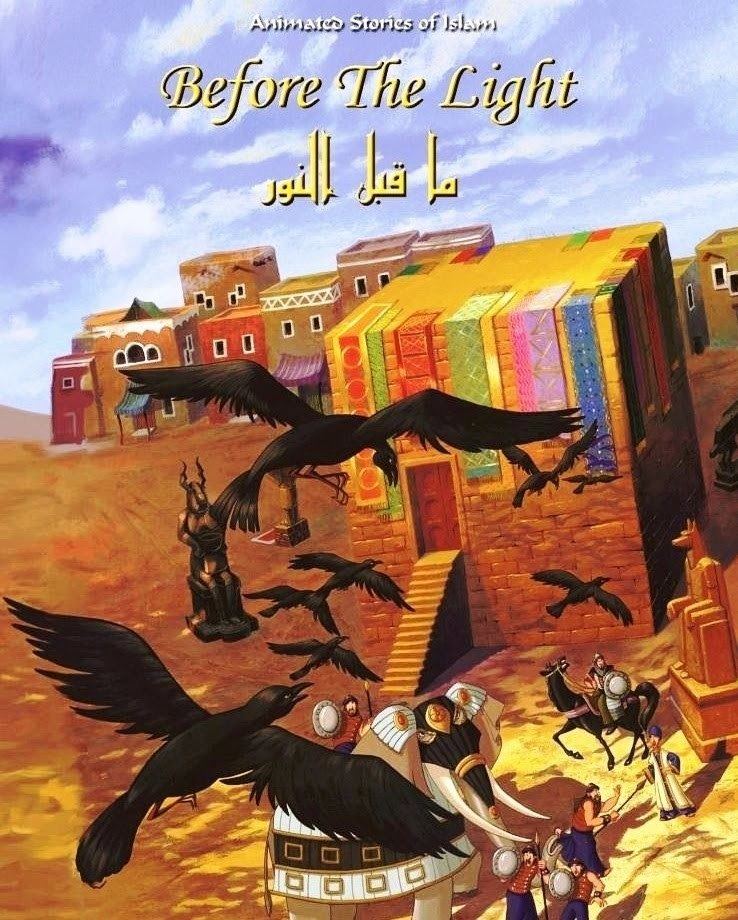 | ||
The ʿĀmu l-Fīl (Arabic: عام الفيل, Year of the Elephant) is the name in Islamic history for the year approximately equating to 570 CE. According to Islamic tradition, it was in this year that Muhammad (Arabic: مُـحَـمَّـد, consonant letters: m-ħ-m-d) was born. The name is derived from an event said to have occurred at Mecca: Abraha, the Abyssinian, Christian ruler of Yemen, which was subject to the Kingdom of Aksum of Ethiopia, marched upon the Ka‘bah in Mecca with a large army, which included one or more war elephants, intending to demolish it. However, the lead elephant, known as 'Mahmud' (Arabic: مَـحْـمُـوْد, consonant letters: m-ħ-m-w-d), is said to have stopped at the boundary around Mecca, and refused to enter. It has been theorized that an epidemic such as by smallpox could have caused such a failed invasion of Mecca. The year came to be known as the Year of the Elephant, beginning a trend for reckoning the years in the Arabian Peninsula used, until it was replaced with the Islamic calendar during the rule of ‘Umar.
Recent discoveries in Southern Arabia suggest that Year of the Elephant may have been 569 or 568, as the Sasanian Empire overthrew the Axumite-affiliated regimes in Yemen around 570. However, historians today believe that this event occurred at least a decade prior to the birth of Muhammad.
The year is also recorded as that of the birth of ‘Ammar ibn Yasir.
Events
According to early Islamic historians such as Ibn Ishaq, in honor of his ally, Negus Abraha built a great church at Sana'a known as al-Qullays, a loanword borrowed from Greek: εκκλησία "church".
Al-Qullays gained widespread fame, even gaining the notice of the Byzantine Empire. The pagan Arab people of the time had their own center of religious worship and pilgrimage in Mecca, the Ka‘bah. Abraha attempted to divert their pilgrimage to al-Qullays and appointed a man named Muhammad ibn Khuza'i to Mecca and Tihamah as a king with a message that al-Qullays was both much better than other houses of worship and purer, having not been defiled by the housing of idols.
Ibn Is-haq's Prophetic biography states:
Ibn Ishaq further states that one of the men of the Quraysh tribe was angered by this, and going to Sana'a, slipped into the church at night and defiled it; it is widely assumed that they did so by defecating in it.
Abraha, incensed, launched an expedition of forty thousand men against the Ka‘bah at Mecca, led by a white elephant named Mahmud (and possibly with other elephants - some accounts state there were several elephants, or even as many as eight)) in order to destroy the Ka‘bah. Several Arab tribes attempted to fight him on the way, but were defeated.
When news of the advance of Abraha's army came, the Arab tribes of the Quraysh, Banu Kinanah, Banu Khuza'a and Banu Hudhayl united in defense of the Ka‘bah. A man from the Himyarite Kingdom was sent by Abraha to advise them that Abraha only wished to demolish the Ka‘bah and if they resisted, they would be crushed. ‘Abdul Muttalib told the Meccans to seek refuge in the hills while he with some leading members of the Quraysh remained within the precincts of the Ka‘bah. Abraha sent a dispatch inviting Abdul-Muttalib to meet with Abraha and discuss matters. When Abdul-Muttalib left the meeting he was heard saying, "The Owner of this House is its Defender, and I am sure He will save it from the attack of the adversaries and will not dishonor the servants of His House."
The reference to the story in Qur’an is rather short. According to Surah al-Fil, the next day [as Abraha prepared to enter the city], a dark cloud of small birds named 'Ababil' (Arabic: أَبـابـيـل) appeared. The birds carried small rocks in their beaks, and bombarded the Ethiopian forces and smashed them like "eaten straw".
